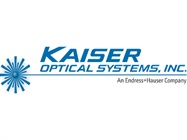Raman Spectroscopy with Synchrotron X-ray-based Techniques: A Powerful Approach in Materials Science and Heterogeneous Catalysis

Over the last 10 years an increasing number of studies combining Raman spectroscopy with Synchrotron Radiation (SR) based techniques like X-ray Absorption Spectroscopy (XAS) have been reported. Such developments are possible due to the evolution of the instrumentation, which enables one to use smaller Raman spectrometers with rapid collection time and optimal spectral resolution and performance. In addition, the advent of bright SR sources allows for collecting time-resolved data with a time scale suitable for dynamic materials characterizations.
The combination of Raman with XAS has clear advantages with respect to separate experiments. This approach eliminates errors due to differences in sample environment, thermal history, ageing, temperature, and sample preparation. Even more important is the possibility to resolve ambiguities in processing by allowing accurate determination of the occurrence of chemical and physical events with a high time frame.
In this lecture, I will discuss how Raman and XAS techniques have been combined at the SOLEIL’s SAMBA beamline. Selected results will illustrate how powerful and complementary this combination is. In addition, the benefit of XAS analysis paired with complementary local order vibrational information by Raman, in the case of genesis of SnO2 nanoparticles by sol-gel route will be discussed. The analysis of reaction products by means of Raman, with structural and electronic characterization of the catalyst in working conditions provided by Quick-EXAFS will be also presented for the Fischer-Tropsch reaction and the ethanol steam reforming process. Lastly, it will be shown how essential the use of such combinations for unraveling the driving force leading to unusual thermally reversible sol-gel transition in the ZrOCl2.8H2O-HCl ternary phae diagram really are.